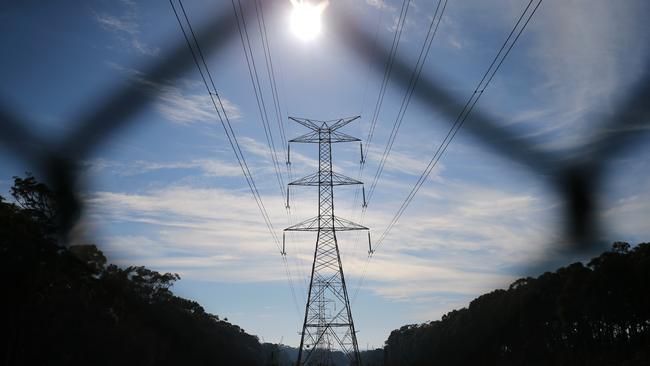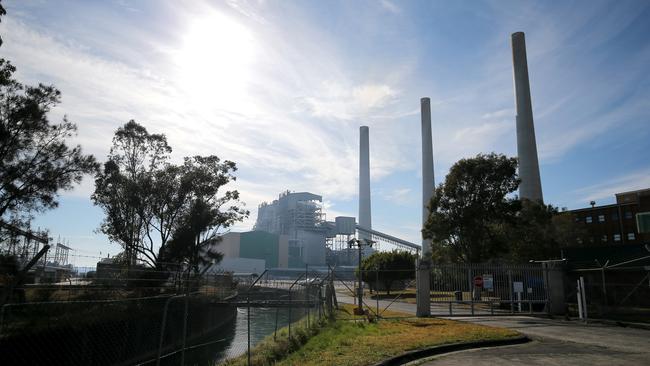Australia needs gas for firming, or coal will continue for longer
Until we find a way to store the excess solar energy produced in the warm sunny months of summer and deliver it to the cold dark months of winter, we will need to find other options.

The climate wars have dominated energy policy for over 15 years. The energy markets are where policy initiatives go to die: the Carbon Pollution Reduction Scheme, the Emissions Trading Scheme, the National Energy Guarantee, etc. As our generation assets get older, delivering new investment and the policy to support that investment, is getting more critical. As evidenced by the NSW government’s intervention on the closure of Eraring, closing a major coal plant is not an option if it means cost, security or reliability are threatened.
Building new power generation in Australia is proving slow and difficult. The only thing Australia has excelled at is installing rooftop solar panels, mainly because it is easy and popular. Solar is good to a point, but we use far more energy in the cold and dark of winter. Until we find a way to store the excess solar energy produced in the warm sunny months of summer and deliver it to the cold dark months of winter, we will need to find other options.
We continue to commission new wind farms, albeit at a rate well below what is required to meet legislated targets. Wind blows all year round, but it can drop production significantly for sustained periods. Wind production for the eastern states in June 2024 was half that of 2023, despite more wind farms having come online. As we build more transmission, we will diversify our wind resources, but diversity will become progressively harder and more expensive to deliver.
Offshore wind is touted as a solution to wind reliability. I would suggest advocates take a long, hard look at the costings, because they are very much in line with nuclear. If you are against nuclear based on cost, you should also stand against offshore wind for the same reason. Australia’s renewable superpower advantage isn’t out at sea, it is in the vast underpopulated land mass. The Europeans did offshore wind because they had to. The only reason Australia is going offshore is to avoid the NIMBY problem.
If we are only building wind and solar, it’s hard to see how the system can cope with the closure of coal. It is great that these renewable resources can produce large volumes of electricity relatively cheaply, but that energy is often produced when not needed and is often not producing enough when it is needed. That is why storage and firming generation is critical to the transition. The stuff you need when the renewables stop.

The role of nuclear is an ideological and a political debate I will leave to others. What is clear is it is a debate that needed to occur at least 15 years ago. We need solutions to storage and firming capacity now, not in 15-20 years, and the reality is that nuclear power, regardless of the ideological debate, just won’t be built in time, given the age of our coal assets.
The declining cost of lithium batteries means high-capacity batteries are being installed at a rapid rate. Batteries are relatively simple to install and have few constraints on their deployment. They are playing a significant role in stabilising the grid and providing short-term storage solutions. They are not, however, curing the longer duration wind-droughts nor the seasonal shift of solar. While pumped hydro is touted as a solution, one only has to look at Snowy 2.0 to see the difficulties with delivering hydro at scale. Consequently, we have seen an about-face by many on the role of gas in supporting the transition to renewables. You know that when even the Victorians are looking for new gas, something has changed.
Gas in combination with renewables and batteries is a viable option for replacing coal. This is the option set out in the Integrated System Plan published by AEMO, with 13GW of new gas plants required to be built by 2050. This is Plan A. The plan is not to replace coal with gas but replace coal with renewables and batteries, with gas providing critical reliability during renewable droughts. The Integrated System Plan is not a forecast, though. It is a statement of what should be done to meet the government’s targets. It makes no comment on whether that plan can or will be achieved.
The gas industry, bitten hard by the “Lock the Gate” campaigns, is wary of investing further in the southern states of NSW and Victoria. Support for gas appears quite fickle at best. Finding funding for new gas investments is also incredibly difficult. Unfortunately, the gas industry has been demonised. Pejorative terms such as fossil gas and gas mining have entered common parlance. The environmental, social and governance policies of our major institutions reflect this. Many banks and super funds are banning further investment in, or funding of, fossil fuel projects, including much-needed gas generation projects, ironically slowing the transition and raising the cost of an essential good. The joy of these policies is you get to feel good about yourself at someone else’s expense.
The federal government’s Capacity Investment Scheme is designed to deliver investment in its renewable energy targets, but specifically excludes funding for gas generation. This means gas generation, as the only technology available now that can solve the firming problem, is the only technology without government support. Without resolving the role of gas, there is a real danger that the Capacity Investment Scheme will go the way of previous energy policy initiatives.
My job of running the Vales Point power station is an interesting challenge. Vales Point was commissioned in 1978, so I am often asked when my power station will close. The official answer is 2033. The truth is I don’t really know. Using coal as the back-up to renewables is putting further strain on an ageing asset. We are already seeing the impact on reliability from cycling the station through the day to make way for renewables. To maintain reliability, I must spend capital on an asset that everyone believes should be closed but an asset that remains critical for the security and affordability of supply. If no one builds new gas plants, Vales Point, along with other coal plants, will remain critical far beyond its current forecast closure date. Getting Vales Point to 2033 will require tens of millions of dollars of capital investment. Going beyond 2033 will require hundreds of millions. Those investments are hard to justify as they are a bet against government policies. It is also an investment that needs to be made sooner rather than later if security and affordability are to be maintained. If I can’t make the case for those investments, there is no plan B to cover a wobbly plan A.
Richard Wrightson is the managing director of Delta Electricity.





To join the conversation, please log in. Don't have an account? Register
Join the conversation, you are commenting as Logout